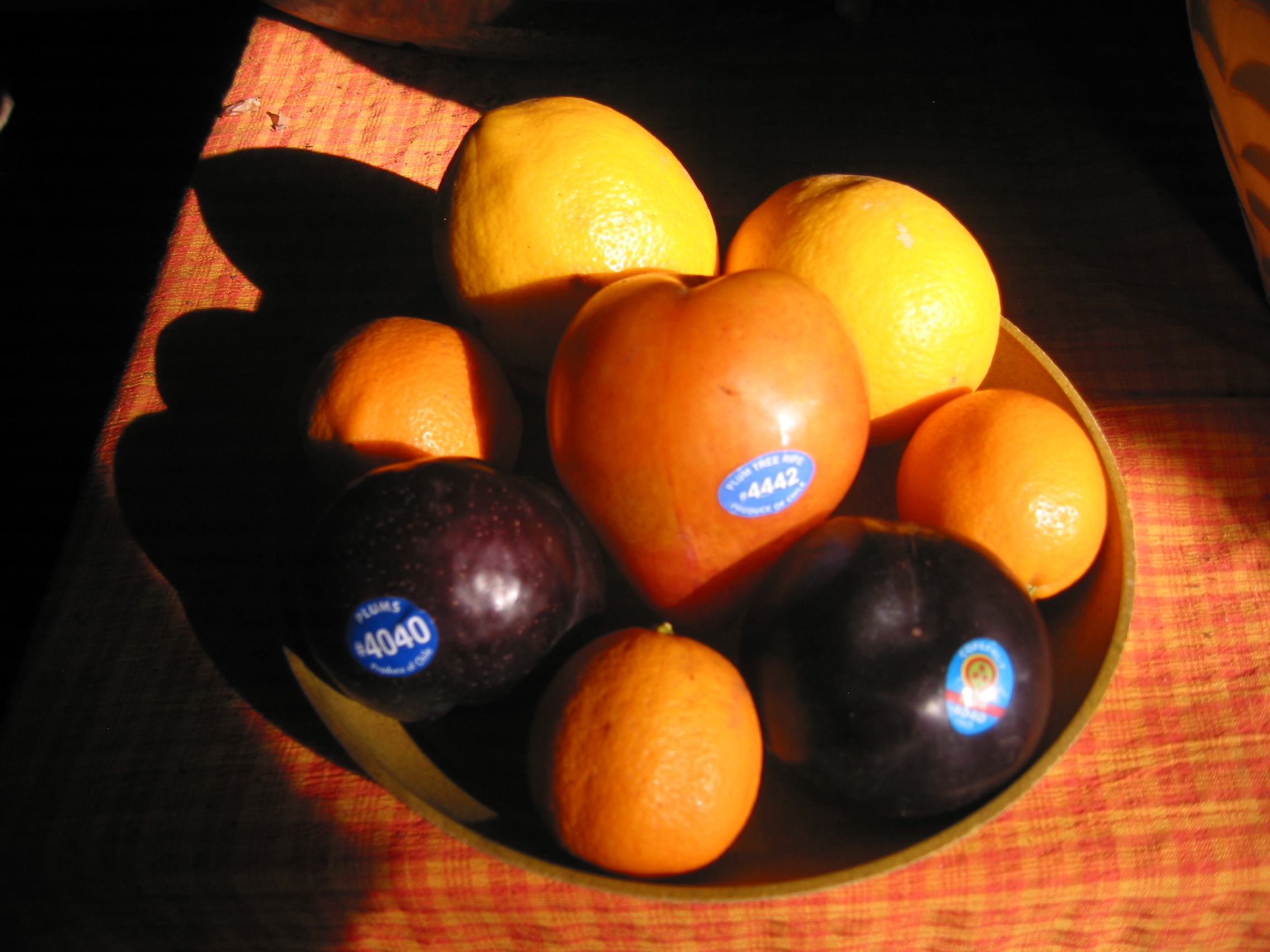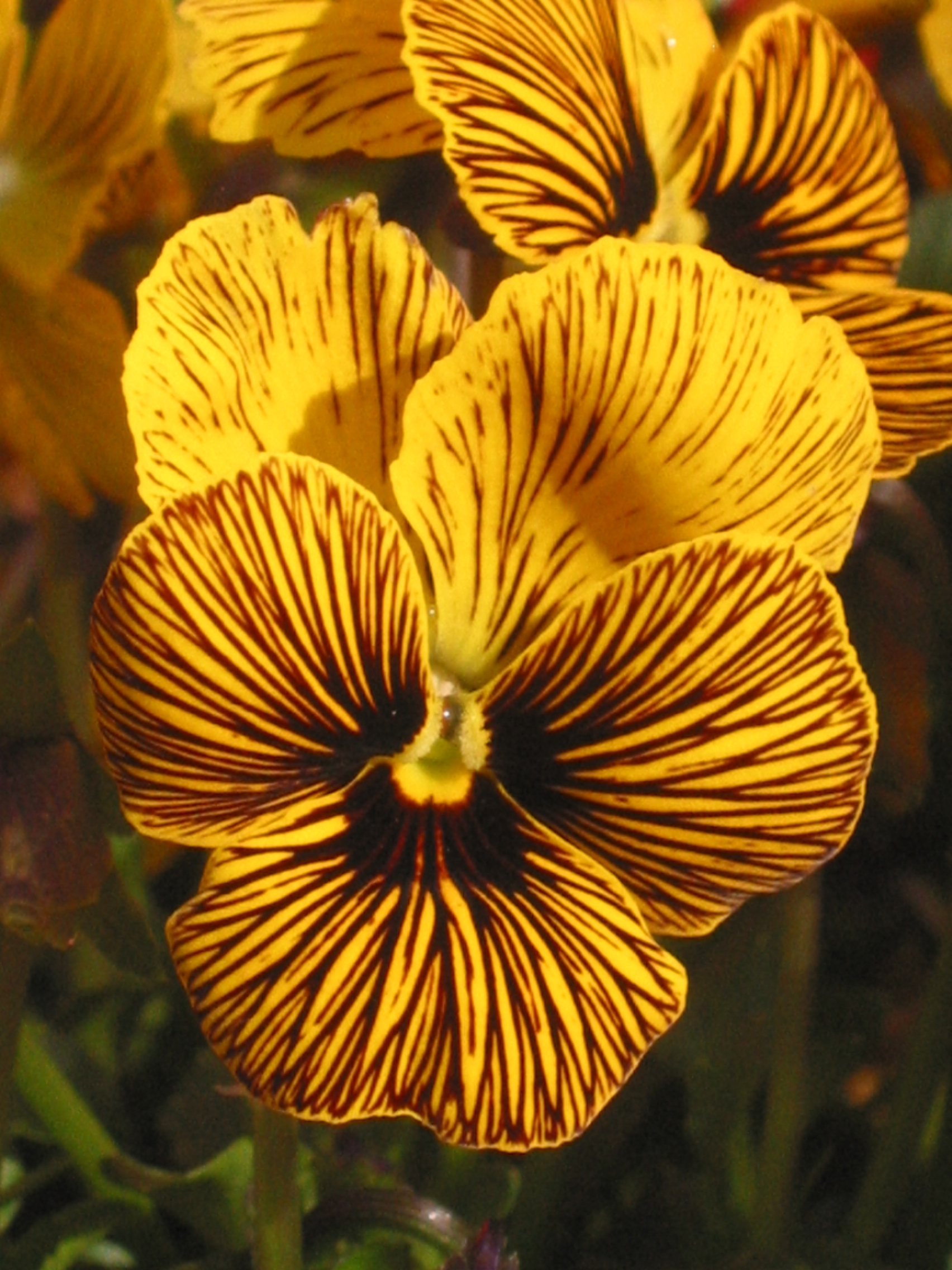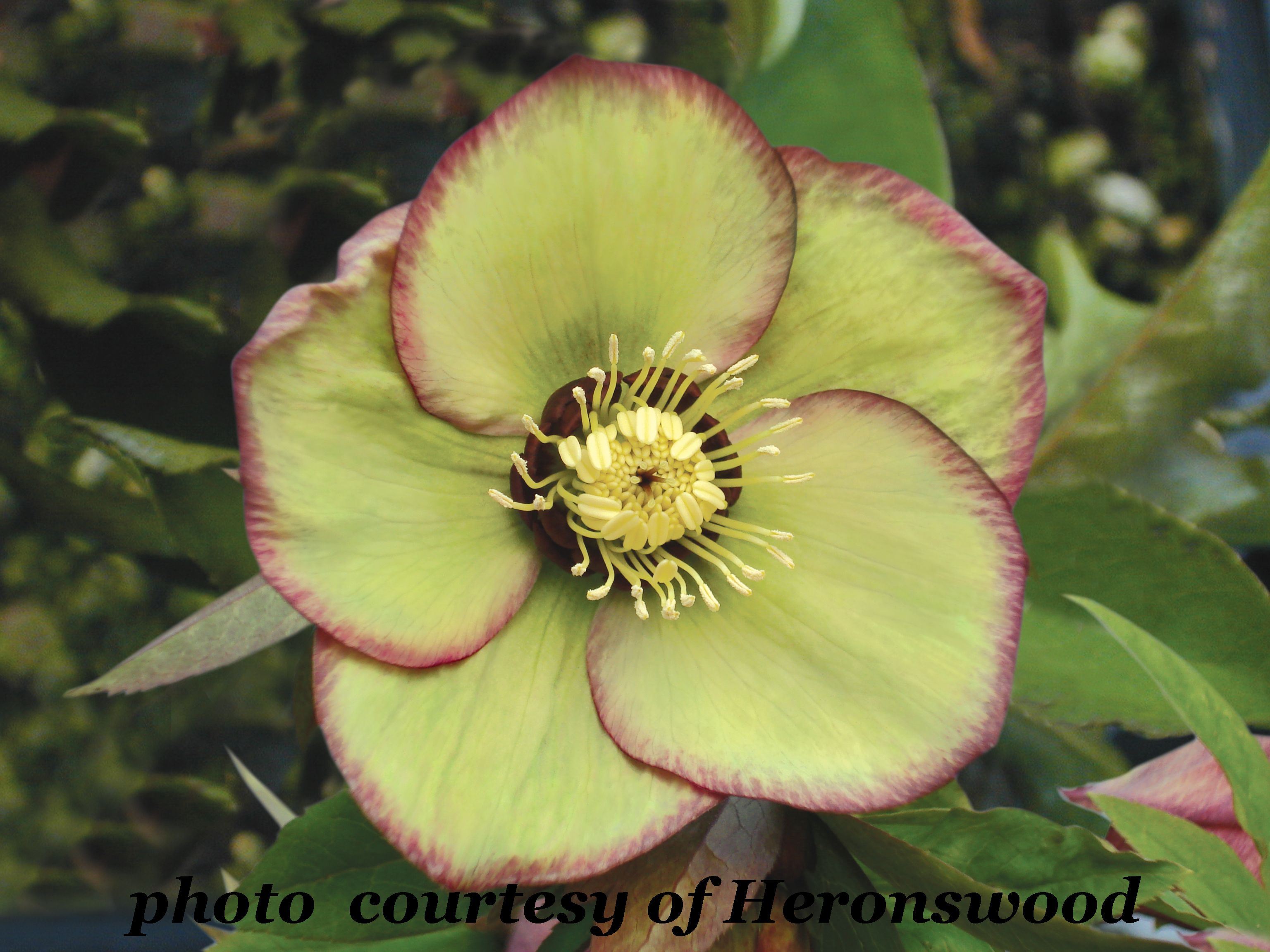A new pest in fruit trees; homeowner information for monitoring and control of Spotted Wing Drosophila (aka Cherry Vinegar Fly).
Serious infestations in the ripening fruit of cherries were reported in several counties of Northern California, including Yolo County, in spring 2009. Fruit were full of squirming larvae. Most scientists, nursery professionals, and master gardeners encountering the pest simply assumed it was a regular fruit fly infesting overripe fruit. Home gardeners protested that the fruit was ruined right on the tree, just at the peak of harvest. Locally our first reports came from South Davis. Damage to cherries in Santa Clara County was so severe, especially on early varieties, that growers had to stop harvest.
 Photo by Ed Show, courtesy of UC Cooperative Extension, Santa Cruz County
Photo by Ed Show, courtesy of UC Cooperative Extension, Santa Cruz CountyState entomologists had to search to identify this new pest, eventually finding a description from Japan from the early 1930's. The spots on the wings of the male flies clearly marked it as Drosophila suzukii. You know Drosophila as "fruit flies," the annoying little flies that hover over rotting fruit. Some in that group are called "vinegar flies." The new pest was initially called the Cherry Vinegar Fly (CVF), but cherry growers weren't thrilled about that name. So it is now called the Spotted Wing Drosophila (SWD).
The homeowners were right: unlike most fruit flies, which infest overripe and rotting fruit, the SWD adult lays its eggs in fruit that is just ripening, and the larva hatch very quickly in warm weather. Damage can be first seen as a small depression on the underside of the fruit, where the adult female has oviposited (laid her eggs). Larvae hatch and begin to damage within as little as two days.

Photo by Larry Strand, courtesy of UC Statewide IPM Program.
Since then, infestations have been found in California in blueberries, blackberries, olallieberries and raspberries, plums, nectarines, and strawberries. Wine and table grapes have been found infested in Oregon, but not yet in California. The original paper describing infestation in Japan in 1939 listed apples, peaches, and persimmons. You can expect possible infestations in nearly any type of soft fruit that ripens in warm weather. Cherries, strawberries, and blackberries have been the main concern so far.
There isn't going to be any quarantine or regulatory action taken, because the fly is already well established and distributed widely in California, as well as in several other states. Fruit flies disperse very readily, helped along by humans.
The lifecycle of this pest
They apparently overwinter as adult flies. While many will die at freezing temperatures, the whole population won't be killed and enough survive to repopulate. The female lays 2 - 3 eggs per fruit, about 350 in her lifetime, and they can have as many as 10 generations per year (perhaps 3 generations in the course of a cherry crop).
They are most active at 68 degrees F, and activity is reduced at higher temperatures; in fact, the males become sterile at 86 degrees F. So the greatest threat is to fruit that ripens in spring and early summer. Vinegar flies in general are very sensitive to desiccation, and will die within 24 hours in the absence of water. Irrigation management may be part of an overall pest reduction strategy: keep the orchard floor clean, and avoid moisture on the ground and nearby weeds while the fruit is ripening.
What are we going to do about this?
When a new pest arrives, plant professionals have a problem. We can't recommend a pesticide if it isn't labeled for a particular pest and crop. Working with cooperative extension personnel, commercial growers can get emergency permission to use products based on efficacy data from other states, if necessary. Similar recommendations may be forthcoming for homeowners. But at the moment nothing is labeled for you to use on this pest in California.
If you didn't have a problem last year, you can monitor to see if the fly is present in your garden. This is easy, because fruit flies are attracted to vinegar, rotting fruit, sugar, and yeast. Mason jars or fly traps filled with homemade bait solutions can be hung in trees. According to one reference, "yeast and sugar mixed with water proved the most effective bait (one package of Baker's yeast, four teaspoons of sugar and 12 ounces of water)." You will surely catch all kinds of interesting insects, including many species of Drosophila!
Traps can be made readily from materials at home; it's pretty easy to attract and catch fruit flies! Mason jars or Rescue Fly Traps can be filled with any number of vinegar or sugar solutions. Options include a mix of yeast and sugar, or yeast with banana slices, or just an inch or so of apple cider vinegar. In field tests, the yeast/sugar mix caught the most flies. Trapping can be part of an overall management strategy.
Mary Louise Flint, Extension Entomologist with the UC Statewide IPM Program, and author of numerous publications on integrated pest management, questions whether trapping will be worthwhile for home gardeners. Commenting by email, "The problem with trapping flies is that you get so many different flies and potentially hundreds in each trap and they all become a sticky mess. You will likely get hundreds of regular Drosophila (and many other species) in your traps and it will be difficult for home gardeners to separate out the few SWD that may be there." She points out that "by the time you find the flies in your traps, it may be too late to apply" control sprays.
Suffice to say, you would need to check your traps often, learn to recognize this fruit fly. The male is the only species with a spot on the wing, and the female has a huge ovipositor. Spray immediately if you find any. Or just watch for damage on your earliest varieties; look for the dimple-shaped spot on the fruit where the eggs are deposited. Sprays could protect later-ripening varieties.
What control measures are available?
When this pest arrived in Washington State, cherry orchards quickly reached very high levels of infestation. Fruit full of squirmy worms have little market appeal. Tests of conventional pesticides such as malathion gave good results, but full tree coverage was necessary and control required 3 applications at 5-day intervals. In my opinion, spraying your ripening fruit with a commercial pesticide sort of defeats the goal of healthy home-grown produce. And without a commercial sprayer, you won't get good coverage, so results will be spotty.
Spinosad, an organic spray with very low human toxicity, was equally effective when applied the same way. But when it is mixed with a bait to lure the flies to the spray droplets, they got very good results just spraying coarse droplets more or less into the middle part of the tree. That is something homeowners could do with a small hand-held sprayer. Spinosad itself is readily available in garden centers. Monterey Garden Insect Spray and Green Light Lawn & Garden Concentrate are 0.5% spinosad. The key is the bait attractant, which those products lack.
What is spinosad?
It is a byproduct of fermentation of a soil bacterium that was found in an abandoned rum distillery in the Caribbean by a scientist who was on vacation (and my kids used to complain about being dragged to botanical gardens!). It has very low toxicity to mammals.
There is one product called GF-120 NF Naturalyte that mixes spinosad with a bait attractant. Unfortunately, it is only available from farm chemical supply companies, and only in gallon bottles at about $155.00 - not a likely option for someone with a couple of backyard trees! GF-120 is a safe, organically-approved spray, so I was curious what bait attractant they were mixing with the spinosad. The label isn't very informative; chemical companies tend to be a little proprietary about their products. But every chemical has an MSD sheet, which lists all the precautionary statements, the handling instructions, etc., for each ingredient; by law, that must list each active ingredient. Lo and behold, the bait is propylene glycol. When I mentioned this to my son, who works with cars, he arched his eyebrows. "You mean antifreeze?"
Yes, propylene glycol, which you know as auto coolant or antifreeze, is very sweet to the taste (pets get poisoned by antifreeze leaks from vehicles) and attracts fruit flies. Apparently it can be produced in an organically-accepted manner. It is even a food additive. GF-120 is 2.5% propylene glycol, which acts to draw the fruit flies to the spray droplets, where they feed and are killed by the spinosad.
Sweeten the pot?
The principle of adding sweeteners to pesticides is a little unorthodox, but not unprecedented. I was reminded of a similar extension-approved tactic we used years ago. Back when we had a commercial pest-control service, we did spraying for walnut husk fly. A farm adviser at the time recommended adding Karo corn syrup to the spray tank! Current recommendation for husk fly is to "add about 4 - 6 tablespoons of molasses per gallon of water applied," and spinosad is now the spray of choice for that (unrelated) pest.
Perhaps the same idea could be adopted for homeowners seeking a reasonable control for Spotted Wing Drosophila: use spinosad at the label recommendation, with 4 - 6 Tbsp of molasses per gallon added to the sprayer.
Use a coarse spray on the trunk and interior of the tree, to draw the flies away from the fruit. You could even use a small squirt bottle and just spray around the inner canopy of the tree. Do this a few days before the fruit ripens, and again once or twice as it begins to ripen. Molasses is going to be sticky, so wash your sprayer out with detergent after use. Spinosad on the fruit will not hurt you, but it isn't necessary to spray the fruit.
It's important to note that GF-120 is the only pesticide extension personnel are currently suggesting, as Flint commented to me, "but with the caveat that it may not be completely effective and is also difficult to obtain." Spinosad with molasses might work for home gardeners, but "we don't have any data for backyard trees." Extension folks and nursery professionals will be interested in any results from home gardeners. If and when a labeled product is available in a smaller unit, at a reasonable price for homeowners, it would be best to use that. We'll keep you updated.
Another option will be to pick the fruit while it is still firm, bring it inside, and ripen it indoors. Look closely at the fruit for the dimple-like point where the female deposits the eggs. Or just sort through your fruit at harvest. Infested fruit is very recognizable: it turns to a pulpy, wormy mess almost instantly.
For more photos and links, check out the original article at http://redwoodbarn.com/DE_Drosophila.html
Written for the Davis Enterprise, February 25, 2010



